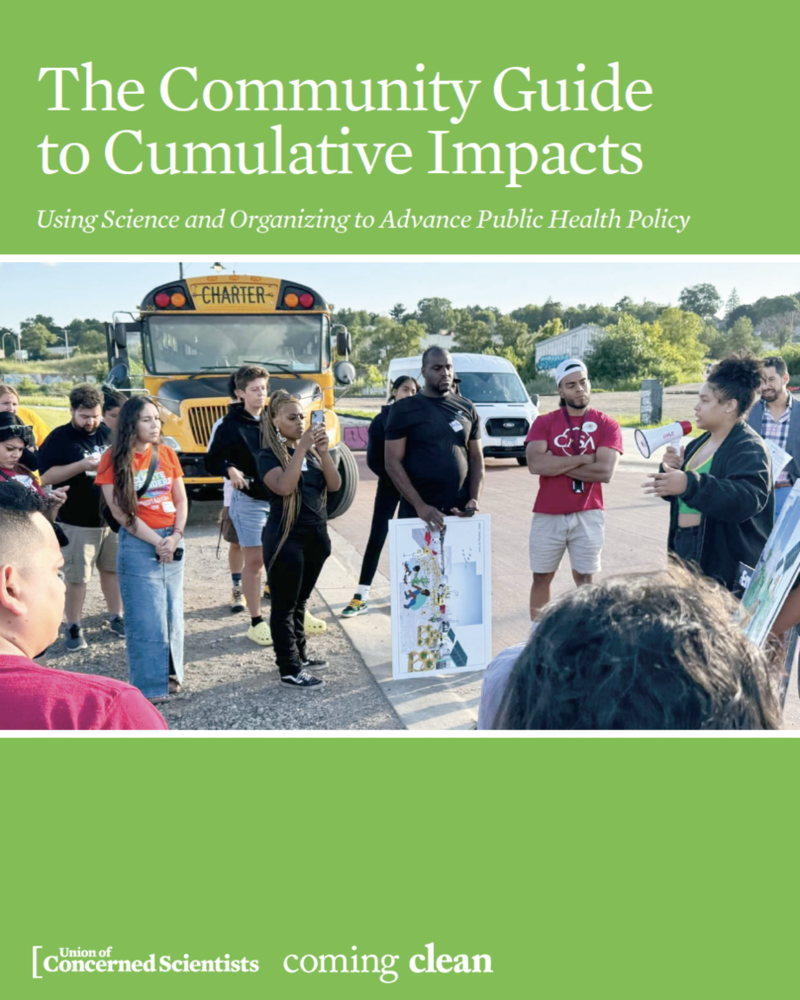
Section 1. Introduction to the Community Guide and Cumulative Impacts
Section 2. Cumulative Impacts Basics
Section 3. Defining, Quantifying, and Mapping Cumulative Impacts
Section 4. Cumulative Impacts Laws and Regulations
Section 5. Organizing in your community
Section 6. Appendix: An Introduction to the Science and Terminology of Cumulative Impacts
*As of January 2025, many of the tools and data sources featured in this report have since been removed from federal websites. We encourage readers to consult copies of these resources that have been restored by Public Environmental Data Partners.
Across the United States, health and environmental policies do too little to protect people and communities from harmful chemicals and pollution in the real world. One key reason is that the nation’s environmental laws and rules consider each chemical or facility in isolation, but no one is exposed to one chemical at a time from one source at a time. The real world exposes all of us to a multitude of harmful chemicals and through a number of pathways—from products we use in our homes and workplaces, to facilities in our neighborhoods that actively pollute the air and water, to legacy pollution that has accumulated in our community’s water, soil, and food chains. Those exposures combine with health stressors that systemic racism and unjust public policies often intensify: barriers to getting good food, existing health conditions, and poor access to health care. This all adds up to harm people and communities.
The Guide is a resource to help community, statewide, and national organizing, research, and campaigns drive changes that protect us from cumulative chemical and pollution harms—especially in disproportionately impacted and overburdened communities. You can use its overview of proven strategies and tools to organize your community. You can learn from trailblazing grassroots community advocates across the United States as you introduce and advance local policies on cumulative impacts. Understanding cumulative impacts as both a concept and a policy strategy will strengthen your capacity to take action in your community or state.